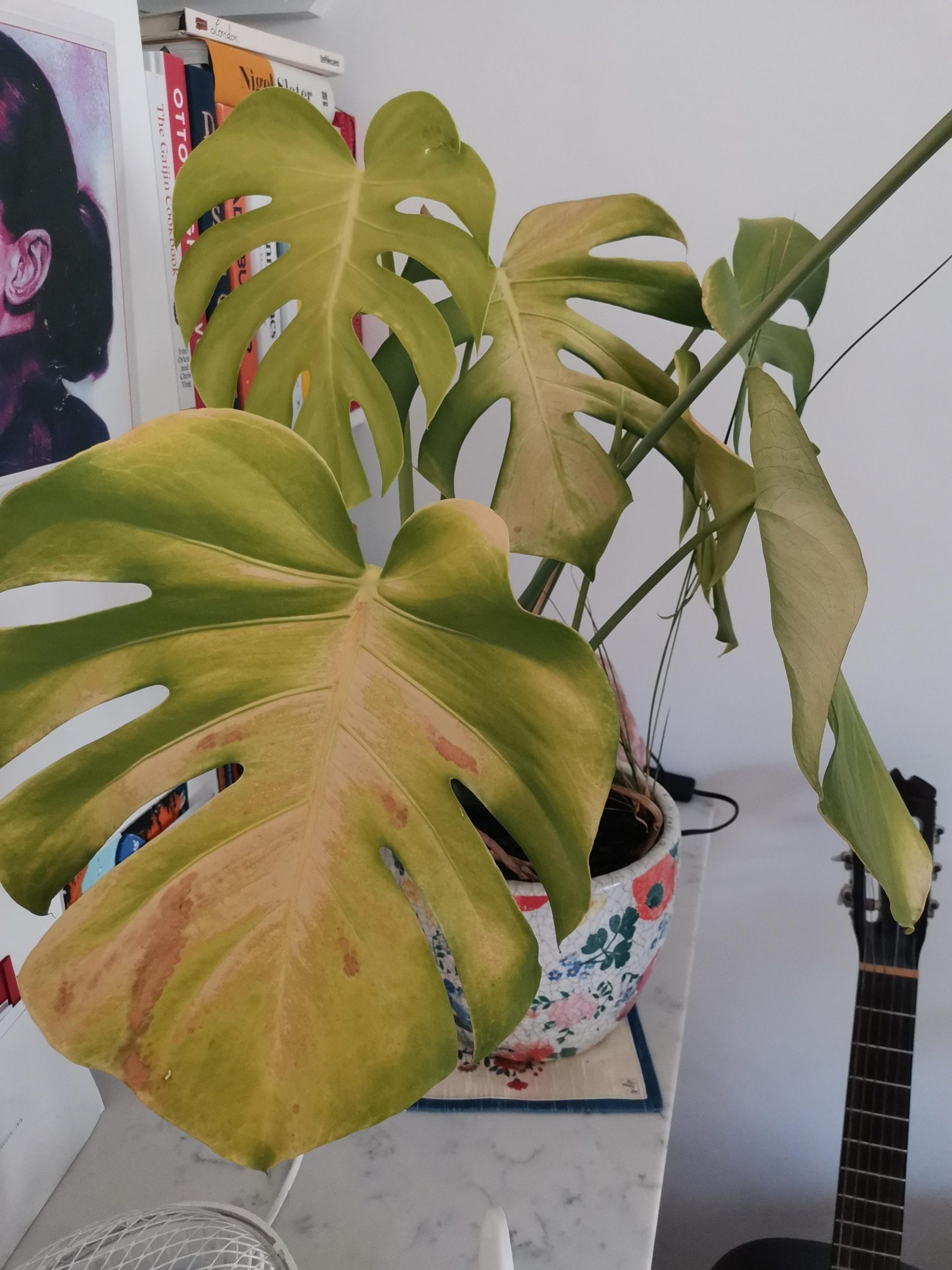To revive a monstera plant, ensure it receives indirect light, water it thoroughly when the top inch of soil is dry, and avoid overwatering. To promote growth, use a balanced fertilizer during the growing season and provide a humid environment.
Trim any yellow or damaged leaves, and repot the plant if necessary. Proper care and attention will help your monstera plant thrive again. Monstera plants, with their iconic split leaves, can bring a touch of tropical beauty to any indoor space.
However, like any living thing, they can sometimes experience periods of decline. If you find your monstera plant looking lackluster or droopy, it may be in need of some revitalization. By understanding the specific care requirements of these plants, you can effectively revive them and restore their health and vibrancy. Whether it’s adjusting the lighting, adjusting watering routines, or providing a more humid environment, taking proactive steps will help your monstera recover and flourish once again. We will explore the various techniques and tips to revive a monstera plant effectively.

Credit: www.youtube.com
How to Revive Monstera Plant: Step by Step Guide
1. Signs Your Monstera Plant Needs Reviving
Your monstera plant may need reviving if you notice yellowing or browning leaves. This could indicate a lack of proper care, such as insufficient watering or too much direct sunlight. Wilting or drooping stems is another sign that your plant is struggling to survive.
Check the moisture level, as overwatering can lead to root rot. Stunted growth suggests that the plant isn’t receiving enough nutrients or light. Consider moving it to a spot with brighter but indirect light. Brown spots or holes on leaves may signify pests or diseases.
Regularly inspect your plant and treat any issues promptly. By understanding these signs and taking appropriate action, you can revive your monstera plant and bring it back to its lush and healthy state.
2. Assessing The Health Of Your Monstera Plant
Assessing the health of your monstera plant involves checking for root rot, examining the foliage for pest infestation, evaluating light and humidity levels in its environment, and measuring soil moisture and acidity. Root rot can be identified by inspecting the roots for discoloration and a foul smell.
Pests like spider mites or mealybugs can cause damage to the leaves and stems, so a close examination is necessary. Adequate light and humidity are vital for the plant’s growth, so ensure it receives sufficient light and humidity levels. Use a moisture meter or your finger to check the soil’s moisture level and adjust watering accordingly.
Additionally, monitor the ph level of the soil to ensure optimal conditions for your monstera plant. By regularly assessing these factors, you can revive and maintain the health of your monstera plant.
3. Steps To Revive A Monstera Plant
Pruning and removing diseased parts is the first step to revive a monstera plant. Next, repot it in fresh, nutrient-rich soil to provide essential nourishment. Adjusting light and humidity conditions is crucial for its survival. Proper watering and fertilizing are vital for monstera plants.
Treating pest infestation and diseases promptly saves the plant’s health. Lastly, provide adequate support for climbing to ensure its growth and stability. Following these steps will help in reviving a monstera plant and promoting its overall well-being. Maintain a healthy environment and care for your plant consistently for optimum results.
4. Tips For Preventing Monstera Plant Health Issues
Reviving a monstera plant is not as difficult as it may seem. To prevent health issues, keep the plant away from direct sunlight. This will protect the leaves from burning and getting scorched. Another important tip is to ensure proper drainage in the pot.
Excess water can lead to root rot and other problems. Maintaining optimal humidity levels is crucial for the plant’s well-being. Regularly dusting and cleaning the leaves will keep them healthy and allow for better photosynthesis. However, it’s important to avoid overwatering or underwatering the plant.
Finding the right balance is key. By following these tips, you can successfully revive and maintain a healthy monstera plant.
5. Frequently Asked Questions (Faqs)
Underwatering can indeed cause the leaves of a monstera plant to turn yellow. To prevent this, ensure that the soil is kept consistently moist but not overly waterlogged. As for fertilization, it is recommended to fertilize your monstera plant every few weeks during the growing season, using a balanced fertilizer.
Common pests that can affect monstera plants include aphids, mealybugs, and spider mites. Regularly inspect the plant for any signs of infestations and take appropriate measures to control them. While monstera plants prefer bright, indirect light, they can tolerate low light conditions to some extent.
However, prolonged exposure to low light may lead to leggy growth and less vibrant foliage. If you want to propagate your monstera plant, you can do so by taking stem cuttings and placing them in water or a well-draining soil mix.

Make sure to provide the cutting with the right conditions for root development, such as warmth and humidity.
Frequently Asked Questions On How To Revive Monstera Plant
How Often Should I Water My Monstera Plant?
Water your monstera plant once a week during the growing season and reduce watering frequency during winter. Make sure the top inch of soil is dry before watering again. Overwatering can lead to root rot, while underwatering can cause the leaves to turn yellow and brown.
How Do I Revive A Wilted Monstera Plant?
To revive a wilted monstera plant, check the soil moisture and water if it is dry. Ensure the pot has drainage holes to prevent waterlogged roots. Trim any yellow or brown leaves and place the plant in a well-lit area, avoiding direct sunlight.
Mist the leaves with water to increase humidity.
What Fertilizer Should I Use For My Monstera Plant?
Use a balanced liquid fertilizer diluted to half-strength every two weeks during the growing season. Choose a fertilizer specifically formulated for foliage plants or use a general-purpose houseplant fertilizer. Avoid overfertilizing, as it can lead to fertilizer burn and damage the plant’s roots.
Conclusion
To bring back life to your monstera plant and witness its lush green foliage return, it is crucial to provide the right care and attention. Start by assessing its current state and identifying any potential issues such as overwatering, inadequate lighting, or nutrient deficiencies.
Correcting these problems by adjusting watering schedules, placing the plant in a suitable location, and using appropriate fertilizers will greatly contribute to its revival. Furthermore, check for pests and diseases regularly and take immediate action if necessary. Remember to prune your monstera plant correctly to encourage healthy growth and remove any dead or damaged parts.
Finally, establishing a consistent routine of care, including regular watering, cleaning the leaves, and repotting when necessary, will ensure the ongoing vitality of your monstera. By following these guidelines, your monstera plant will thrive, becoming a striking centerpiece in your home or garden.

